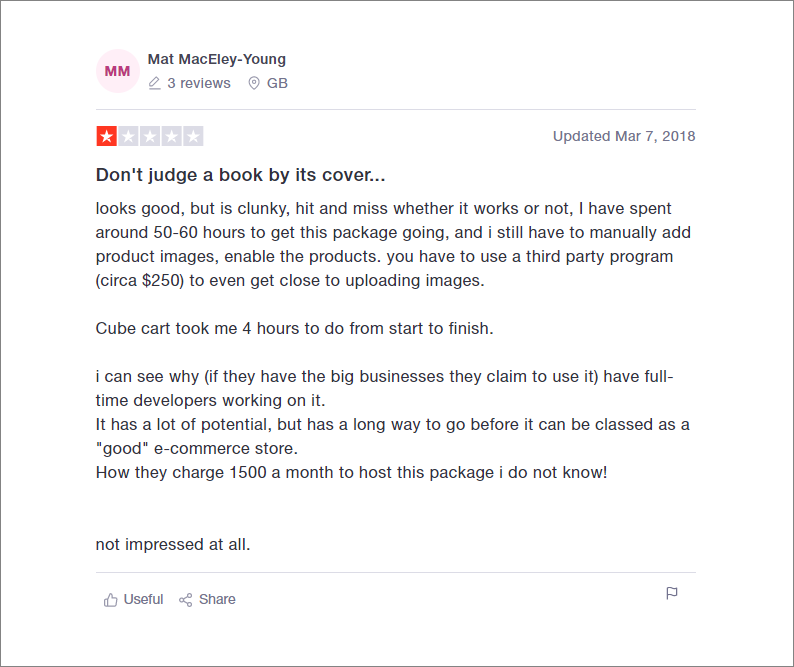Magento has been one of the most well-known eCommerce platforms around the world. But with changing times, many renowned eGrocery platforms are getting better by providing faster, cost-effective, and robust solutions that aid business growth.
Albeit, Magento provides a wide array of features catering to the needs of large and small-scale grocery businesses. It is difficult for new users to maneuver through the platform with no prior experience in coding or web development. Moreover, the extensions and enterprise solutions offered by Magento are exorbitant.
The three distinct editions of Magento comprise – Magento Community Edition, Magento Enterprise Edition, and Magento Enterprise Cloud Edition. It also offers various grocery themes for stores to make them aesthetically pleasing, but at an additional price. As the platform is decently complicated and has high overhead costs, entrepreneurs and startups should look for Magento’s alternatives in the market.
Table Of Contents
Why Not Magento?
Magento has been extremely popular since its launch. But, with time and modern technology, many turnkey solutions with enhanced functionalities are also available in the market. In comparison to them, Magento tends to surpass the acceptable price range due to its high development cost, configurations, and slow website performance.

Listed below, in detail, are the limitations and reasons to opt for Magento’s competitors for grocery startups or if you are looking to migrate for ease of work.
- Magento is Costly
- Magento is Slow
- Development Time is More
- Difficult Maintenance
- Lack of Technical Support
- Complicated for Beginners
- Upgrading to a New Version of Magento is Complex
Magento is Costly
Magento is suitable for businesses with big budgets. However, if the requirements of a small-scale project are to be considered, then Magento outweighs its benefits. The cost of maintenance, add-ons consisting of grocery design themes, bug fixing, and more make Magento far from being budget-friendly, and not all businesses are going to have big capital. Though Magento open source is free to download, it does not cover the cost for store owners.
On average, the entry price is $2000 per month for Magento, which is a hefty amount considering that the extensions will be at an additional cost. As per a review on Trustpilot, a user has mentioned his unpleasant experience with Magento and has quoted the price being charged by them as a licensing fee for a product that cannot be used.

Source: Trustpilot
Magento is Slow
Magento offers a plethora of extensions and plugins that make it slow. Site optimization becomes a time-consuming task for developers due to unnecessary plugins. However, by default, Magento has a fast page loading speed, on shared hosting, Magento slows down. The reason for this is Magento’s complex architecture that contains a lot of files and database tables, resulting in a compromised customer experience.

Source: Trustpilot
Development Time is More
A team of expert developers is required to understand the complex infrastructure of Magento. Keeping the integrations working with a smooth data flow is strenuous and increases the development time. To keep the website optimized to deliver results that justify the time, effort, and money, Magento developers need to keep their knowledge base updated.
Lack of Technical Support
Safeguarding consumer data is crucial for any eGrocery marketplace. But on facing downtime or in urgent cases, Magento has no response, or the support is delayed. This results in interruption and loss in trading for any eGrocery store owner.
Complicated for Beginners
With a wide array of options available for customization, Magento has created a situation for beginners, especially if they lack technical knowledge. Since Magento is heavily layered with complex code, it takes a significant amount of time to learn and implement changes as per the business requirements.
Upgrading to a New Version of Magento is Complex
Migrating from a previous version to a new one can take 1-2 months on average. But, if you are not equipped with experience and knowledge, data migration on Magento can probably cause serious data loss. For instance, Magento 2 was built from scratch on a separate platform, as a result, Magento grocery themes for version 1 and the extensions were not supported. Similar themes for Magento 2 had to be purchased, which came at an unpleasant cost, as hardly a few things could be migrated from the old site.
Migration Among Magento Versions – A Big Chaos
As mentioned above, upgrading to a new version of Magento is complicated. Having said that, some time ago Magento had declared that a new version of Magento (2.0) would be out. And, they would end support for Magento 1, i.e. all versions of Magento from 1.1 to 1.9 would work without maintenance and support.
While business owners had hoped for a smooth transition to Magento 2. Unfortunately, it was discovered in June 2020, that Magento 2 was on a completely different platform with different architecture and technology. It did not support any previous versions, leading to chaos among existing merchants.
Since merchants couldn’t upgrade their grocery stores, unlike the previous versions, Magento 2 required the same time and effort to migrate to a completely new platform that was unavoidable and expensive. Almost 100,000 stores were outdated with the new release, and eGrocery sites using outdated versions soon went out of compliance.
What if Magento 3 Comes?
If Magento 3 is out for a release, many business owners who have their grocery stores on Magento 2 would forlorn. A new release in line on a completely different platform could create havoc, just like the previous migration to Magento 2, leaving eGrocery stores and their buyers at considerable risk.
Magento Alternatives for Grocery Stores
Let’s broaden our periphery and look at a few alternatives to Magento:
1. Growcer
Growcer is an excellent Magento alternative that has been designed and developed especially for eGrocery businesses. Enriched with user-centric features, Growcer delivers exuberance to its clients instantly as it is a ready-made grocery eCommerce platform.
Being a self-hosted solution, Growcer looks after the technical aspect of setting up an online grocery store. Users are not required to have any prior technical knowledge. The onboarding process is seamless, and 1-year of free technical support is offered, apart from other benefits.
Pros:
- High performance
- No development time (ready to install)
- Customization according to user’s requirements
- No extensive knowledge of technology is required
- Encrypted library core files
- Self-hosted and comes with a lifetime license
- Free installation
- Readymade grocery delivery apps
- 1-year free technical support
Cons:
- Growcer does not have readymade seller apps, but the same can be created under the customization package
Migrate your Online Marketplace from Magento to Growcer
2. BigCommerce
Among the available grocery eCommerce platforms, BigCommerce is one of the desired SaaS-based platforms. Encapsulating beautiful grocery templates, BigCommerce also has an impressive and reliable uptime.
The technical aspect is taken care of, as BigCommerce is self-hosted. But, premium services of customization come at a hefty price if one opts for BigCommerce as Magento’s alternative.
Pros:
- 24×7 support
- Supports majority of payment gateways
- Grocery sites can be launched quickly and efficiently
- Easy to use
- Offers strong SEO benefits
Cons:
- Less variety in design templates and features
- Premium services come with a hefty price tag and could lack adequate customization for a startup
3. Yo!Kart
With its inbuilt marketing tools and simple onboarding, Yo!Kart is another major contender in the space of grocery eCommerce platforms. The biggest upside to this platform is its user-centered design and lifetime license offered. The implementation and setup of Yo!Kart is hassle-free, and 12 months of free technical assistance is offered.
Pros:
- A standalone solution to build Multi-vendor Marketplaces
- Completely customizable & highly scalable
- Multilingual & Multi-currency functionality
- Fully owned license
- Zero transaction fees
- One time payment
- Flexible payment terms
- 12 months free technical support
Cons:
- Yo!Kart does not have delivery apps
4. Prestashop
Prestashop is another good Magento alternative. Offering a myriad of customizable extensions, Prestashop is free to start with and offers two versions – downloadable software and a cloud-deployed option. Equipped with multilingual functionality, Prestashop is most popular in non-English speaking countries.
Being open-source, Prestashop has built an international community. However, it lacks an in-house customer support team. Due to the large community magnitude, troubleshooting solutions are easily available. But, if outsourcing support is preferred, then Prestashop is not the ideal solution.
Pros:
- Intuitive interface
- Customizable Themes
- Open Source
- Multi-lingual support
Cons:
- Lack of customer support
- The platform is heavy, leading to multiple website crashes
- Add-ons are expensive
5. Shopify
Shopify is a popular choice for grocery platforms and is a perfect Magento alternative that surpasses both convenience and control offered by later in setting up an online grocery marketplace. It is a proprietary platform or a closed source platform that provides small business owners instant access to easy-to-use web tools for building an eGrocery site. But the customization is limited, and the plugins come at an unpleasant cost.
Pros:
- User-friendly
- Easy drag and drop development features
- Offers beautiful mobile-friendly designs and templates
- Includes SaaS benefits
- 24×7 support
- Decent uptime record
- Robust app store for additional eGrocery features
- Reasonable base fee
Cons
- Charges transaction fees for using any other payment gateway apart from Shopify payments
- Limitation in expanding website’s customization
- Plugins and extensions are costly
- Different parts of data are stored at several locations, which makes the updation less easy
Conclusion
Every business owner looks for a bespoke grocery marketplace solution, and Magento has been an effective platform in the past. Nonetheless, the number of extensions required to meet the use-case-specific requirements of a grocery marketplace owner can be expensive. Keeping in line with the requirements, it is necessary to look for Magento alternatives.
Besides, if you are an existing Magento user or are looking for an online grocery solution without any technical whereabouts, then finding the right grocery marketplace solution that meets your business needs is important. Unlike Magento, several readymade grocery marketplace solutions are available in the market that are robust, cost-effective, customizable, and easy to maintain. If not readymade, you can contact any premium web development company that can help you to launch your grocery marketplace.






